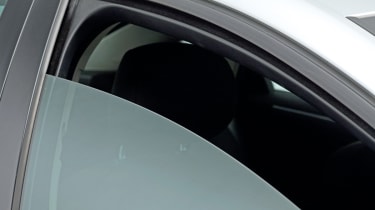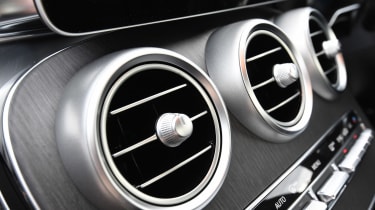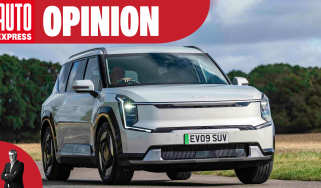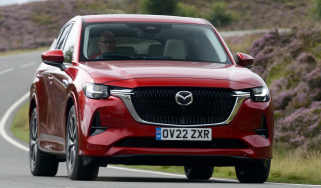How to keep your car cool: top tips on air-con, sun screens and driving in summer
Even in the UK, it can get blisteringly hot during the summer, but there’s no need to fret or sweat thanks to our top tips

While walking in the hot summer weather can be a very enjoyable experience, climbing into a sun-baked car is often like being locked in a sauna. However, keeping your car cool during summer isn’t only crucial for your comfort, it also an important role in keeping you safe, too.
According to research by SEAT, a temperature in excess of 35°C inside your car can impair your driving ability by as much as a 0.05 per cent blood alcohol reading — perilously close to the UK drink driving limit of 0.08 per cent. The study showed that these hot temperatures reduce drivers’ reaction times with an increase from 25°C to 30°C causing a 20 per cent drop.
To see you through your summer road trips and daily commutes, our expert road testers have provided their top tips for keeping both your car and yourself as cool as can be.
How to keep your car cool during summer
Start your day right
Summer mornings are often deceivingly cool, lulling us into a false sense of security for what the rest of the day might hold temperature-wise. Even in those fresher early hours, however, using the car’s air-conditioning will help counteract the rising temperatures as the sun moves higher in the sky. Gradually cooling the car in this way is a far better option than waiting until the car heats up to activate the A/C.
Before you even take a seat in the car, you can also effectively fan out some of the heat by swinging a door back and forth. While you may get a few odd looks from passers by, removing this excess heat will make things a bit more comfortable for you and take some of the strain off your air-conditioning system.
To re-circulate, or not to re-circulate
When you first get back into your car, you can use the recirculation option on your car’s air-con to cool the cabin down. This makes it much easier for the system to cool the air quickly, as it continues to work on the cooler air inside the car.
However, continually using air recirculation can cause your windows to fog. If you have rear-seat passengers, recirculation can also be a bad idea as many systems pull air from the front of the car and continue to cool it, but the air in the back of the car can quickly become stale and warm. The best option is to use the ‘auto’ mode, which most cars now have. This is self-regulating and works well to keep everyone in the car cool.
Find some shade

We know we’re stating the obvious here but where possible, park out of direct sunlight. It’s also worth thinking ahead here if you’re parking for a whole day, as a shady spot in the morning could be in full sunlight later in the day.
If you can, pick a spot that’s going to be shady in the mid-day heat. You should also try to position your car with the sun behind you, as this will keep the steering wheel and front seats cooler. If you work within easy reach of the car park, you could always pop out at lunchtime and relocate your car to a spot with more afternoon shade. This might seem like a chore but you’ll be glad you did it on the drive home.
Break out the sun screen
When it gets sunny, it’s always sensible to apply some sunscreen, and your car is no different. You can get relatively cheap reflective screens online or from most good automotive outlets. Alternatively, if you fancy splashing the cash, you can invest in specialist sun shields that use reflective coatings. Either way, a reflective shield on your windscreen will help to redirect the sun’s rays and keep your cabin cool.
Cover-up that leather
If your car has leather seats, a hot day can be particularly uncomfortable. An easy way to keep your seats a little bit cooler is to use a blanket, or whatever you can find, to cover them when the car is parked. The leather seats won’t get quite so hot if they aren’t in direct sunlight.
If you can’t cover them up, wiping leather seats, steering wheels or even the dreaded alloy gear knobs with a damp cloth is a good way of quickly cooling them before driving off.
Release the heat

At the end of a sunny day, you return to your car knowing that a veritable oven awaits you. All you want to do is crank up the air-con to the max and head home to a nice cold drink. However, by jumping straight into a hot car and driving off you don’t allow any opportunity for the heat to escape, meaning your air-con has to work a lot harder to reduce the car’s air temperature. The best bet is to wait before getting into your car, opening the doors and windows for a moment to allow the hot air to escape.
If you can, it’s good to also leave a small gap in your windows while the car is parked, but only do this if you know your car is secure (and it isn’t going to rain later).
Own an EV or PHEV? Pre-conditioning is your friend
Thanks to the wonders of smartphone technology, electric car and plug-in hybrid owners can now cool their car down without even setting foot inside it. If your EV or PHEV is hooked up to a charger when you need to pre-condition the cabin, you won’t even need to use any battery power. Don’t worry if you aren’t hooked up, though, as the impact on your battery range should be minimal.
Either way, all you need to do is set the cabin temperature via your car’s smartphone app and then wait a few minutes for the climate control system to work its magic. You don’t need to sit in the car sweating buckets the whole time, nor will you even need to leave the house. Once the cabin is cooled, you can then take a leisurely stroll towards your car knowing that you aren’t about to step into a road-going volcano.
Own a combustion car? Stop the stop-start
Although stop-start can be great for saving fuel, on a really hot day it can reduce the effectiveness of your air-conditioning. When the feature turns off the engine, it also will stop the car’s air-con from running, and if you’re stuck in a summer traffic jam, you’ll notice the lack of A/C pretty quickly. If your car does have this feature, it’s a good idea to turn it off when it’s hot.
The same also goes for the eco driving modes you’ll find on modern cars. As well as adjusting automatic gearshift patterns and throttle response, many of these systems reduce the effectiveness of the air-conditioning to save fuel.
Get the right angle

After a long, hot day, you might want to feel a bit of cool wind in your hair and it can be tempting to point every available air vent directly at your face. But this actually won’t keep the car cool as effectively because it won’t equally distribute the airflow around the cabin.
Heat travels upwards, so cooling the bottom half of the car will help ensure an even flow of the colder air that’s coming from the air-conditioning. At the start of a journey, aim the A/C through the lower vents and close the top ones to help cool air push the warmth upwards and gradually outwards. Once everything is cooled down, you can then direct the air flow as required.
Bring a bottle
This one may seem obvious, but make sure you have at least one bottle of water per passenger. Dehydration is never a good thing, and getting caught in a traffic jam could mean you’ll go far longer between driving breaks (and the opportunity to buy a drink) than you initially planned.
Look after your air-conditioning
Like any other part of your car, looking after the air-conditioning system will make it last longer. Checking the pollen filter every 10,000-15,000 miles is the best way to make sure they aren’t clogged up. On most new cars they are relatively easy to check, and can be found behind the glove box, but if you aren’t sure, your service centre will be able to help.

If your air-con is on but feels disappointingly warm, it may be time for a regas. Although do-it-yourself refill kits can be found in some shops, these aren’t always very effective. The gasses used in A/C systems are also highly hazardous, and regassing systems is a complex job. Therefore, it’s best to leave this one in the hands of the professionals. Most garages offer a regassing service, and it shouldn’t prove too costly, either.
Make sure your car isn’t suffering
Keeping yourself cool is important, but your car will feel the heat, too. An overheating engine can result in disastrous damage, so ensure that your coolant is in good condition and topped up. It’s also good to keep one eye on the dashboard’s temperature gauge if your car has one.
If you’re not the most mechanically minded individual, most garages will be happy to conduct a summer health check at a reasonable cost. If your car is overheating, the temperature gauge will be quickly moving towards or sitting within the red zone, and a red warning will also appear. If this happens, pull over and switch off the engine as soon as possible.
Time to treat yourself to a cooler car? Our Find a Car service can help…
Find a car with the experts




